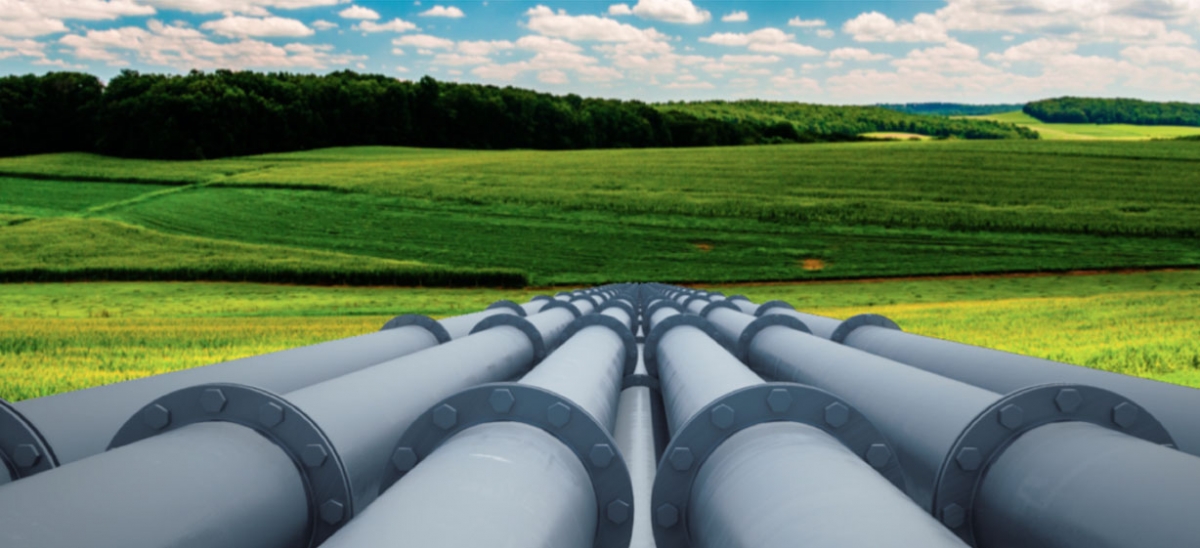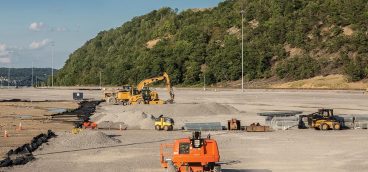
It has become the new flash point in the battle over the development of the Marcellus, with advocates for development facing off against opponents, not in remote fields in rural Pennsylvania, but all over the region. And it’s not just about drilling anymore.
The new battle over the Marcellus is being fought over hundreds of miles of proposed natural gas pipelines, and it is playing out from the densely populated suburbs of Philadelphia and Pittsburgh to the narrow side streets of Boston and New York.
The scope of the proposals is staggering.
There’s Mariner East, a two-phased, $3 billion project that would ship 345,000 barrels a day of natural gas liquids— propane, butane and ethane—hundreds of miles across Pennsylvania from Mark West Liberty’s Washington County facility to a former gasoline refinery at Marcus Hook in Delaware County. Supporters of the project contend it could create hundreds of long-term jobs and boost the economy of the entire state by as much as $100 million to $150 million a year. Critics have raised concerns about potential environmental and safety concerns—particularly since a significant portion of the project would redirect the flow through a 50-year-old cross-state pipeline. They have bristled at the notion that the partnership behind the project may use eminent domain to secure rights to lay new pipeline along some parts of the route.
A few miles north of Marcus Hook, opposition is even greater to the proposed $1.3 billion Penn East Project, which would funnel the prized dry natural gas from the Marcellus in northeastern Pennsylvania though six increasingly densely populated areas, beginning in Pennsylvania’s Luzerne County and ending, after cutting through affluent areas of Bucks County and New Jersey’s Hunterdon County, in Trenton. Proponents argue that the project would deliver low-cost gas and boost the economy of the energy-hungry Mid-Atlantic. Critics, including several municipalities along the route, have argued that the project would threaten environmentally sensitive and historically significant areas, that the consortium behind it is minimizing the concerns of activists and local authorities, and that, in the end, the project would do little to wean the region off of its dependence on fossil fuels—a priority for many in the environmental community.
There is no question that a pipe construction boom is underway. As of the end of 2014, there were at least 17 proposed projects pending before the Federal Energy Regulatory Commission (FERC). The projects range from moving gas from the northern Appalachians to various markets—from gas-starved New England, to Virginia, where projects are planned to carry Marcellus gas into the South. And in Ohio, there are plans to build pipelines to carry Marcellus and Utica gas to the Midwest.
What’s been almost entirely missing from the often-heated debates is a thorough analysis of what would happen if all of the projects proposed were approved by the FERC and ultimately built, said a wide range of experts, analysts, activists and representatives from government agencies interviewed by Pittsburgh Quarterly. In the haste to build the infrastructure needed to support the development of the Marcellus, they say, questions are rarely raised by anyone in the process that could shed light on whether we’re in danger of building more than we need and can use.
“It does appear that… too much pipeline is being proposed and planned over the next four or five years.” —Luke Johnson, Industry Analyst, Bentek Energy
In other words, are we in danger of replicating the glut in production over the past couple of years with a glut in infrastructure?
“It does appear that… too much pipeline is being proposed and planned over the next four or five years,” says Luke Johnson, an industry analyst with Bentek Energy, an energy market analytics firm based in Denver, Colo. “It’s more than what is needed.”
To be sure, Johnson says, there is likely to be a strong demand for natural gas and a strong need to get it from fields like the Marcellus and the Utica to end users. By one estimate, the entire U.S. will need an additional 45 billion cubic feet a day of natural gas pipeline capacity by 2030 to meet the needs of the power generation industry alone. And there will likely remain a bottleneck in the delivery system for Appalachian gas in the short term.
Still, Johnson says, overbuilding pipeline capacity is a possibility. He sees the demand for the projects likely to be built over the next five years. But by the time you plot out the development beyond that five-year window, Johnson says there’s a risk that proposed capacity could outstrip both the supply of natural gas from the region and outpace the demand for it. “By the time you get to 2019 or 2020 there’s… a huge surplus over what we need.”
There is a strong likelihood that many if not most of the projects pending before FERC will be approved, if history is any indication. As FERC spokeswoman Tamara Young Allen acknowledged, of the 803 pipeline proposals submitted to the agency over the past few years, more than half—451—were approved. And of the remainder, the pipeline companies withdrew a significant number. As a result, the nation added 127 billion cubic feet a day of natural gas pipeline capacity between 1998 and 2013, according to a recent U.S. Department of Energy report prepared by Deloitte Marketpoint.
FERC does require applicants to provide some evidence that the proposal is needed—they must prove that they have customers, Young Allen said. “We want to see that there is a potential need, and make sure that it’s designed properly to meet that need.” But the agency does not analyze where those customers are coming from, she says. Thus, it’s not clear whether the customers are utilities already being served by existing infrastructure or whether the proposed project would add surplus capacity over a longer-term time frame.
“We look at the project on an individual basis,” she says, adding that, even if FERC does approve a project, it’s far from guaranteed that the project will proceed. “The market chooses what gets built and what doesn’t get built. Sometimes they get their approval from FERC, and they don’t get built because there’s no market for it.”
What makes the question even more complicated is the fact that the market is not a single entity, but a complex network of regions with wide variations in infrastructure within each of them. And while there are certainly some areas—particularly in New England, where the capacity to deliver natural gas is constrained, which has driven up prices to consumers—there is no hard evidence that lack of capacity extends across the whole Mid-Atlantic region, says Robert Dunn, an assistant professor of economics and business who studies the natural gas industry at Washington and Jefferson College.
The market, he says, seems to suggest that for other parts of the northeastern region beyond New England, the demand for new pipeline capacity may not be particularly robust. Gas prices reflect the demand for natural gas and the ability of the producers to supply it, and so far, he says, there’s no “strong indication that there’s any huge inefficiency” that needs to be addressed. “If the price being commanded in New York was much higher,” an indication that the market there was constrained, “then yeah, you need to get it there.”
And where there are holes in the delivery system, they tend to be more narrowly regional, says Steve Leahy, a vice president of the Northeast Natural Gas Association, a New England-based trade organization for the industry. New England, he says, is a case in point. As low supply, high demand and spiraling prices demonstrated during the brutal winter of 2013-14, the New England region desperately needs about 1 billion cubic feet of additional capacity. And several controversial projects, including the Access Northeast Project and another by Kinder Morgan would, if completed, funnel three times that much gas into the region, much of it from the Appalachian basin.
In fact, any one of the major projects would meet the 1 billion cubic feet-a-day threshold, he says. The problem is that only one of them, the Kinder Morgan project, would deliver gas to western Massachusetts, which currently has little natural gas infrastructure, while the others would serve the broader New England region.
The bottom line is that, in the absence of any kind of grand master analysis, a road map if you will, coupled with the problem that utilities rarely project their needs more than a few years in advance, it becomes increasingly difficult to determine whether just enough or too much pipeline is in the offing, he says.
That galls environmental activists. They believe that part of FERC’s responsibility in evaluating gas pipeline proposals should be to determine whether they’re needed at all in a particular region. As Maya Rossum of the Delaware River Keepers, an organization that has been steadfast in its opposition to development of both the Marcellus and its infrastructure, put it, “my organization along with others has been pressing FERC to do bigger-picture analysis and also… doing more comprehensive planning. Nobody’s looking at any of these big-picture things. The process is very carefully crafted and narrowly defined so that the pipeline company has to pull together information that serves their purposes, and FERC gives a thumbs-up or a thumbs-down on that narrow window. Even the alternative analysis really is focused on where to lay the pipeline, not if you need to lay the pipeline.”
There are those who argue that such concerns are misplaced, that rather than choke the market, the additional capacity proposed will have the far-reaching beneficial effect of driving down gas prices even further for residents of the newly served areas. Steve Mullen of Econsult Solutions, the company that did a glowing economic analysis of both the Marcus Hook and Penn East projects, is one of them. “I don’t necessarily buy the story that New York, New Jersey and even New England are already served. I think there are huge price reductions still available for those consumers and even for those plants that have already shifted from coal to gas.”
And even in the unlikely event that the development of infrastructure were to outpace domestic demand, there is a kind of safety valve on the horizon, he says. “To be honest. I think the ultimate goal is export,” though plans to export natural gas in large quantities—controversial in their own right—are still in their early stages.
“I think there’s still a huge amount of untapped Mid- Atlantic, New York and New England demand that can be satisfied with lower prices in direct gas here. And then the trump card will be export.”





